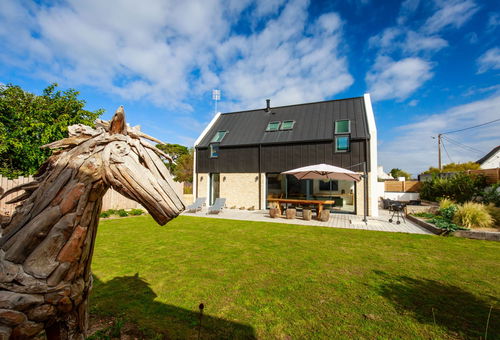Go exploring the Côte Ville and the villages
In the old days, the hotel de France welcomed famous people: the great tragedian Sarah Bernardt came there during thirty years before leaving to Belle Ile, as well as the composer Raynaldo Hahn, the Comte Robert de Montesquiou, the dramatic author Edmond Rostand.
The glazed room on the ground floor which was once the hotel's restaurant now hosts exhibitions. During the occupation, the building will be requisitioned by the Germans. In 1974, the City Hall of Quiberon too cramped in the building of the street of the station settles there after a complete reorganization of the building.
Lower down in town, the large menhir on rue Pouligner is now a war memorial. The origins of the chapel of Saint Julien date back to the 15th century. First rebuilt in 1722, it was pillaged and sacked by Admiral Lestok's English squadron in 1746, and rebuilt in 1859 in its present form.
In 1910, it was abandoned and serves as a warehouse for the fishermen of the village. Threatened with destruction, the villagers restore it in 1928. This rectangular chapel is surmounted by a stone bell tower. Very beautiful stained glass windows represent the Crucifixion, the Nativity and the Miraculous Peach.
The Chapel of St. Clement located outside the present city is the first witness of the Christian settlement on the peninsula. A first monastic church was built on this site as early as the 4th century. Following the invasion of the Vikings in the ninth century, it was abandoned and destroyed.
Back in the eleventh century, the monks rebuild a Benedictine monastery. But the sand gradually invades the site and they are forced to abandon it. At the beginning of the 18th century, the roof collapses and the walls gradually disappear.
From 1870, excavations were carried out by Abbot Lavenot, which revealed several sarcophagi, two fragments of statuettes, funerary pottery and fragments of a ceramic galley. One of the sarcophagi is in the museum of Quiberon, the others are visible at the bottom of the cross over overlooks the current chapel. It is located in a recess surrounded by dunes on which remain vestiges of a Christian cemetery: In this way? one finds there several Merovingian sarcophagi.



